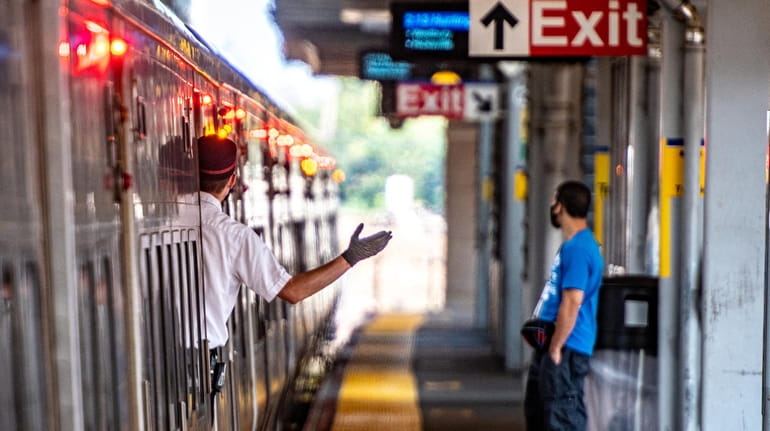Union membership falls in New York for the third year

LIRR workers are among the most visible union members in the region. Credit: Newsday/J. Conrad Williams Jr.
Unions in New York State lost members in 2020 for the third year in row, in part because of job cuts stemming from the coronavirus pandemic, federal data shows.
The U.S. Bureau of Labor Statistics reported the ranks of private-sector and government-worker unions in the state totaled 1.66 million last year, down 71,000, or 4%, from 2019. However, that loss was less than half the 7.5% decline between 2018 and 2019.
The bureau did not release data for Long Island and the state’s other nine regions last week. However, local labor experts and union activists said there are about 250,000 union members in Nassau and Suffolk counties.
Nonunion layoffs affect numbers
The statewide drop in union membership between 2019 and last year coincided with a decline of 8.5% in the number of people employed, from 8.25 million to 7.55 million.
Union members made up 22% of all workers in New York last year, up from 21% in 2019.
"New York State continues to be among the states with the highest union membership rates in the country," said Mario Cilento, president of the state AFL-CIO, an umbrella group of union locals. New York is second only to Hawaii, where 23.7% of workers are represented by unions.
The share of unionized workers increased in New York and nationwide because more nonunion workers were laid off and hard-hit economic sectors such as restaurants, hotels and tourism businesses have few unionized employees.
"Unionized workers have had a voice in how their employers have navigated the pandemic, including negotiating for terms of furloughs or work-share arrangements to save jobs," said Heidi Shierholz, policy director at the Economic Policy Institute, a Washington think tank. "This likely played a role in limiting overall job loss among unionized workers."
She attributed more than half the gain in the rate of union membership to job losses among nonunion workers.
Unions' new makeup
Unions also are becoming more diverse with increases in the number of blacks, Hispanics and women members.
"Though union membership has historically been largely the province of white men, that’s no longer the case," said Hayley Brown, a researcher at the Center for Economic and Policy Research, another think tank in Washington.
In New York, union membership has fluctuated a lot since 2013.
The declines last year and in 2019 and 2018 were preceded by an increase of 75,000 in 2017. Union membership dropped by 96,000 in 2016, increased by 58,000 in 2015, dropped by 6,000 in 2014 and increased by 145,000 in 2013.
Union activists in the state and nationwide expressed optimism about the future, citing President Joe Biden’s support for federal legislation that would protect workers’ right to join a union and punish company executives personally for interfering in union organizing campaigns.
Richard Trumka, president of the national AFL-CIO, said if Congress passes the Protecting the Right to Organize bill it would ensure "our labor laws support and protect the freedom to form a union."
Union membership in 2020
Across the country, 10.8% of workers were unionized.
Most unionized states:
Hawaii 23.7% of all workers were union members
New York 22%
Rhode Island 17.8%
Least unionized states
South Carolina 2.9%
North Carolina 3.1%
Utah 3.7%
SOURCE: U.S. Bureau of Labor Statistics

